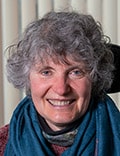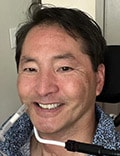Approximately one quarter of US adults (> 70 million individuals) have some type of disability, making people with disabilities (PWD) the largest minority in the United States. But a significant proportion don’t receive equitable healthcare— despite decades of federal disability civil rights laws mandating it.
A major reason is that many physicians feel unprepared to care for this population. Reasons include concerns about the costs of properly equipping the office, insufficient time, and inadequate training. A study of > 700 US physicians found that over a third reported knowing “little or nothing” about their legal responsibilities under the Americans with Disabilities Act (ADA), citing lack of formal education as a factor.
A new study published in the Journal of General Internal Medicine focused on deficits in medical training that perpetuate ableism in healthcare for PWD, whom some study participants referred to as a “forgotten minority.”

Senior author Lisa Iezzoni, MD, MSc, professor of medicine, Harvard Medical School Health Policy Research Center, Mongan Institute at Massachusetts General Hospital, Boston, herself has a disability. She was diagnosed with multiple sclerosis in medical school. Although she received her medical degree, she was unable to apply for residency programs because her medical school refused to write a letter of recommendation.
“This was blatant, explicit discrimination,” she told Medscape Medical News. “Fortunately, today, the ADA — instituted in 1990 — prohibits it.”
But the ADA hasn’t resolved the problem of discrimination. “Disturbingly, more than 30 years later, PWD continue to face hurdles in obtaining equitable healthcare and there’s still discrimination against medical students and physicians with disabilities,” she said.

Carol Haywood, PhD, lead author and assistant professor in medical social sciences, Feinberg School of Medicine, Northwestern University, Chicago, Illinois, told Medscape Medical News, “As we continue to examine root causes and contributors, we’ve looked increasingly at physician attitudes and bias and why they feel so unprepared.” According to Haywood, medical schools are “failing to educate students regarding disability.”
Inadequate Medical Training
The Journal of General Internal Medicine paper takes previous research a step further. “We realized that improvements in training are necessary, so we interviewed medical students and medical educators through focus groups,” Iezzoni said.
The researchers found that disability was neglected as a topic, relegated to select lectures across all years of medical school, often offered only as an elective, or that curricula were volunteer led. “Participants therefore felt disability was made to appear unimportant or beyond the scope of required knowledge for medical practice,” Haywood commented.
Participants described a culture in which disability was framed only as a “problem or something undesirable,” to be diagnosed and treated. This differs from broader biopsychosocial or social models that define disability as “located not solely within the mind or body of an individual but rather in the relationship between people with particular bodily and intellectual differences and their social environment.”
Some participants pointed to “pervasive discrimination” against PWD in the field of medicine and others felt that medical schools were unwilling to take action to remedy the gaps in disability education.
Disability as a Part of Life
“Thinking about disability only as an individual problem situated within a particular person perpetuates the idea of ableism — the process of assigning value and worth to a person based on body structures and functions and what people can do with their bodies,” Haywood said.
“We saw this during the COVID pandemic, during care rationing, when PWD were discriminated against, assumed to have less quality of life and to be less deserving of care.”
What’s missing from medical education is “the idea that there are diverse human experiences; that disability can be part of a rich, lived experience; and that it’s part of our human condition,” Haywood said. Disability should be “woven across the medical school curriculum and taught as part of human diversity and function, so physicians will know that they’ll encounter PWD in their practice, regardless of their area of specialty.”
Iezzoni and colleagues found that 82% of physicians surveyed thought PWD have poorer quality of life than other people do. “My response is that everyone lives the life that they live. Everyone has good and bad aspects of their lives, and very few of us have a perfect life,” Iezzoni said.
Communication Is Essential
Rex Marco, MD, professor of reconstructive spine surgery and musculoskeletal oncology, UT Health Houston, McGovern Medical School, Texas, told Medscape Medical News he feels physicians are “ill-prepared for taking care of PWD, not only in practical ways, such as the setup of our offices, but also in learning to empathize and sympathize and express compassion.”

Marco, program director of the spine fellowship, Department of Orthopedic Surgery, himself lives with quadriplegia following a bicycle accident several years ago that injured his spinal cord. Although he can no longer perform surgery, Marco continues to engage in patient care and teaching. He’s also the medical ambassador for the Christopher and Dana Reeve Foundation.
Marco acknowledges that as a surgeon, he had been unaware of patients’ needs beyond treating the actual injury. “There’s so much I didn’t know until I became a patient myself.”
After the accident, Marco had a tracheostomy and needed a ventilator. “In the rehabilitation facility, my respiratory therapist was adjusting my ventilator when I had the sensation that I couldn’t catch my breath,” he recounted.
Marco tried to get the therapist’s attention. When she looked at him, he mouthed the words, “my ventilator isn’t working,” she stared blankly. He mouthed the words again. She made a shrugging gesture. Marco is sure the expression on his face was “panicked” because he knew the oxygen level was becoming dangerously low.
“I mouthed the words, ‘Get help!’ and finally she ran and got someone. The next therapist read my lips and immediately found and fixed the problem in the ventilator tubing.”
Marco remembered that when he treated postsurgical patients, he too couldn’t read lips, despite having had patients with tracheostomies and ventilators. “I would say, ‘When the ventilator comes out and I can understand your words, I’ll answer your questions.’”
Marco believes physicians should master the necessary skills to communicate with PWD or find others to assist in communication.

Clarissa Kripke, MD, clinical professor of family and community medicine, University of California, San Francisco, agrees. She calls communication “the foundation of patient care.” This holds true for all patients, including those with disabilities — whether physical or cognitive.
How to Communicate With PWD
Kripke, a family physician who specializes in treating patients with developmental disabilities and complex medical needs, told Medscape Medical News that only the patient “knows their own internal experiences.” Many physicians treating PWD speak to the patient’s caregiver or supporter instead of the patient, or they speak in a patronizing or infantilizing voice.
Kripke advises beginning the patient visit by speaking to PWD “as you would approach any other patient, in a normal tone of voice — not a ‘childish voice’ — and go through the same questions as you would any other patient, even if your patient has a developmental disability or is supposedly nonverbal. And don’t speak louder just because the patient is nonverbal.”
You may be able to elicit a surprising amount of information that even the caregiver might not know. Moreover, patients might have more capacity to communicate than you would think.
“If you don’t get the information you need from the patient you can say, ‘Can I ask your supporter some questions, or is there someone who can provide the information I need?’ Encourage patients to bring supporters to appointments who understand their communication style, which could be idiosyncratic — for example, blinking the eyes once for ‘yes’ and twice for ‘no’ or making a particular sound when in pain.”
Kripke described a patient with autism. She was accompanied by a new caregiver who didn’t know the patient well and said the patient was unable to communicate.
Kripke said, “let’s try anyway” and started asking her questions. “‘How do you say yes?’ She made a sound. ‘How do you say no?’ She made a different sound. I gave her an anatomy book and asked her to touch the picture to show where it hurt. I got no response. But then I said, “Touch hurt.” She took my hand and put it on the right upper quadrant of her abdomen, so I was touching her abdomen hand over hand.” Kripke performed an ultrasound exam based on that communication, and the patient turned out to have gallstones.
“You may not always get the information you need,” Kripke acknowledged. “But patients will try harder to communicate if they realize you’re serious and listening because they’re so used to physicians not listening and speaking only to the caregiver that they give up trying to communicate. Sometimes, the patient’s inability to speak is learned passivity rather than a true inability to communicate,”
She advises physicians to schedule PWD at the end of the day or perhaps before lunch so that extra time can be allotted for the visit.
Physical Accommodations for PWD
Iezzoni, who uses a wheelchair, describes visiting a physician for a routine checkup. She was unable to access the examination table because it wasn’t height-adjustable. Moreover, she doesn’t know how much she weighs because she is unable to stand on a scale, and the medical practice she attends has no wheelchair-accessible scale.
In her research, Iezzoni has found that fewer than half of physicians surveyed who saw patients with significant mobility limitations “always” or “usually” used accessible exam tables or chairs.
Fortunately, that’s changing, she said. The US Department of Health and Human Services and the Department of Justice issued updated regulations in 2024 stating that by July 2026, every US medical facility is required to have a wheelchair-accessible scale for weighing patients and a height-adjustable examination table.
Marco advises physicians to look at workspaces, parking garages, and entrances to their office buildings, as well as elevators and exam rooms to notice where there are suboptimal accommodations for people with disabilities and to address them.
Laying a New Foundation: Medical Education
Leslie Rydberg, MD, associate professor, physical medicine and rehabilitation, Monika and Henry Bett Medical Student Education Chair, Feinberg School of Medicine, Northwestern University, Chicago, Illinois, told Medscape Medical News that she heads a disability program at the medical school. One of her roles is to integrate disability education into the medical school curriculum.
Rydberg, whose specialty is physical medicine and rehabilitation (PM&R), works with an adult population of people with different types of disabling conditions, function, and quality of life. Medical students are required to participate in a PM&R rotation at Chicago’s Shirley Ryan Ability Lab, which gives them the opportunity to think about “functional considerations” and the “challenges and barriers that PWD experience when trying to return to the community and navigate their lives with changes in function.”
Core concepts are integrated into first- and second-year educational programs, where patients share their perspectives with the medical students, including experiences interacting with the medical system. Students are taught that a disability is more than a medical diagnosis. “It can be a social identity, one of many identities, and not something we necessarily need to ‘cure’ or ‘fix.’ Rather, we need to accept and celebrate everyone for who they are,” Rydberg said.
Conclusion
“It’s important for physicians to treat people not as diseases or disabilities but as human beings who have those diseases or disabilities,” Marco said.
Iezzoni urged physicians to “listen and try to partner with PWD, who will often know more than you do about their condition — especially people with rare conditions that cause the disability. Try to collaborate and work together to achieve goals the patient might have.”
Rydberg, Kripke, Haywood, and Iezzoni disclosed no relevant financial relationships. Marco is the Chief Medical Ambassador for the Christopher and Dana Reeve Foundation.
Batya Swift Yasgur, MA, LSW, is a freelance writer with a counseling practice in Teaneck, New Jersey. She is a regular contributor to numerous medical publications, including Medscape Medical News and WebMD.


